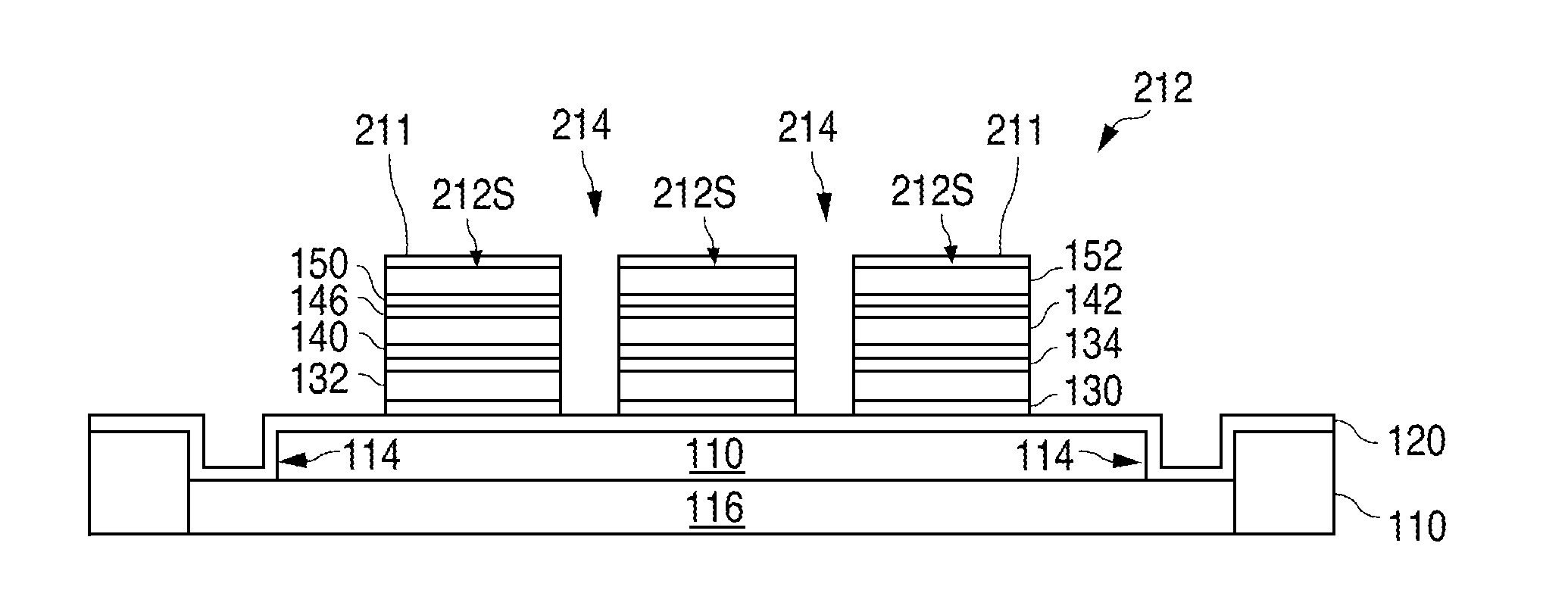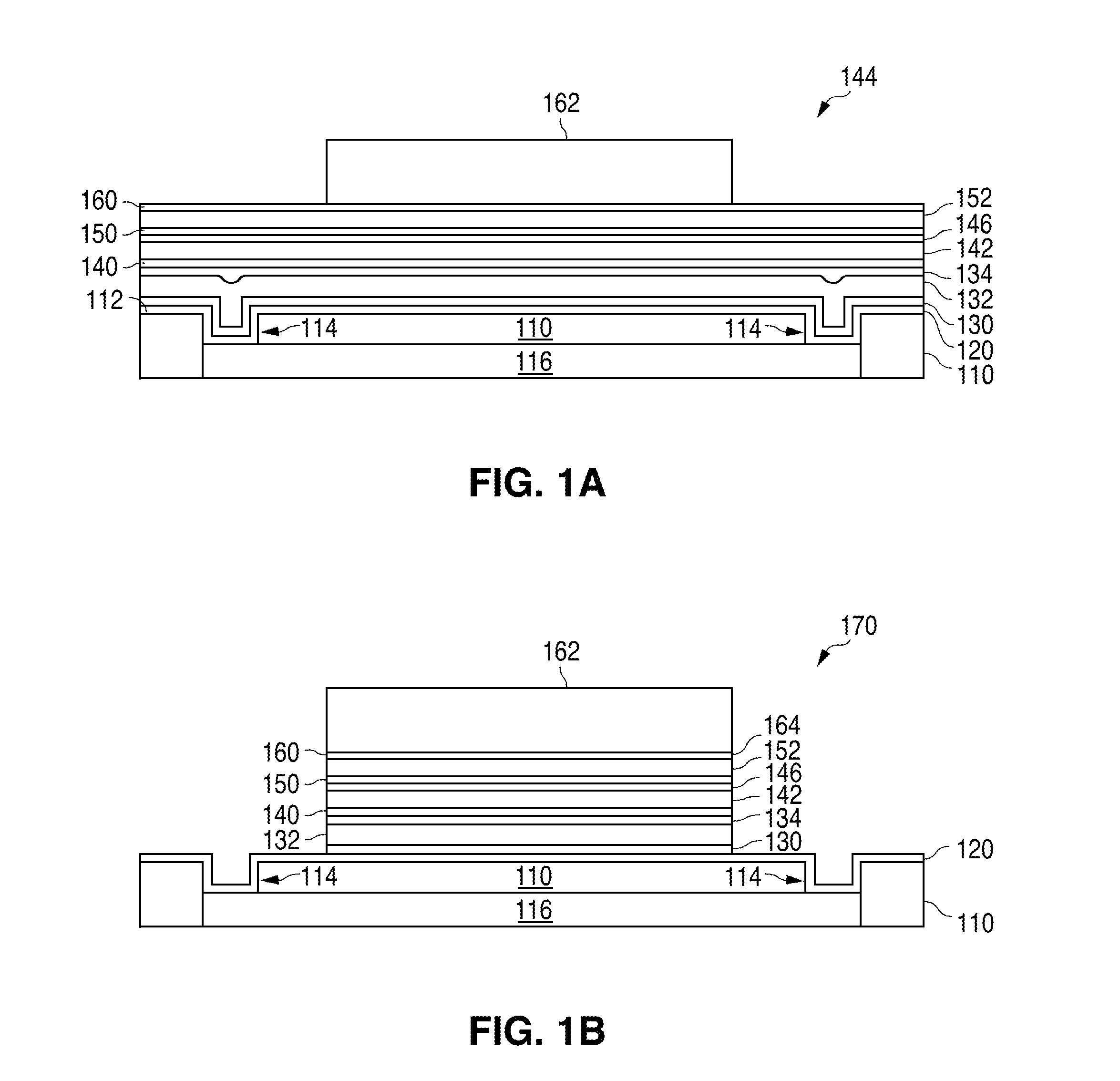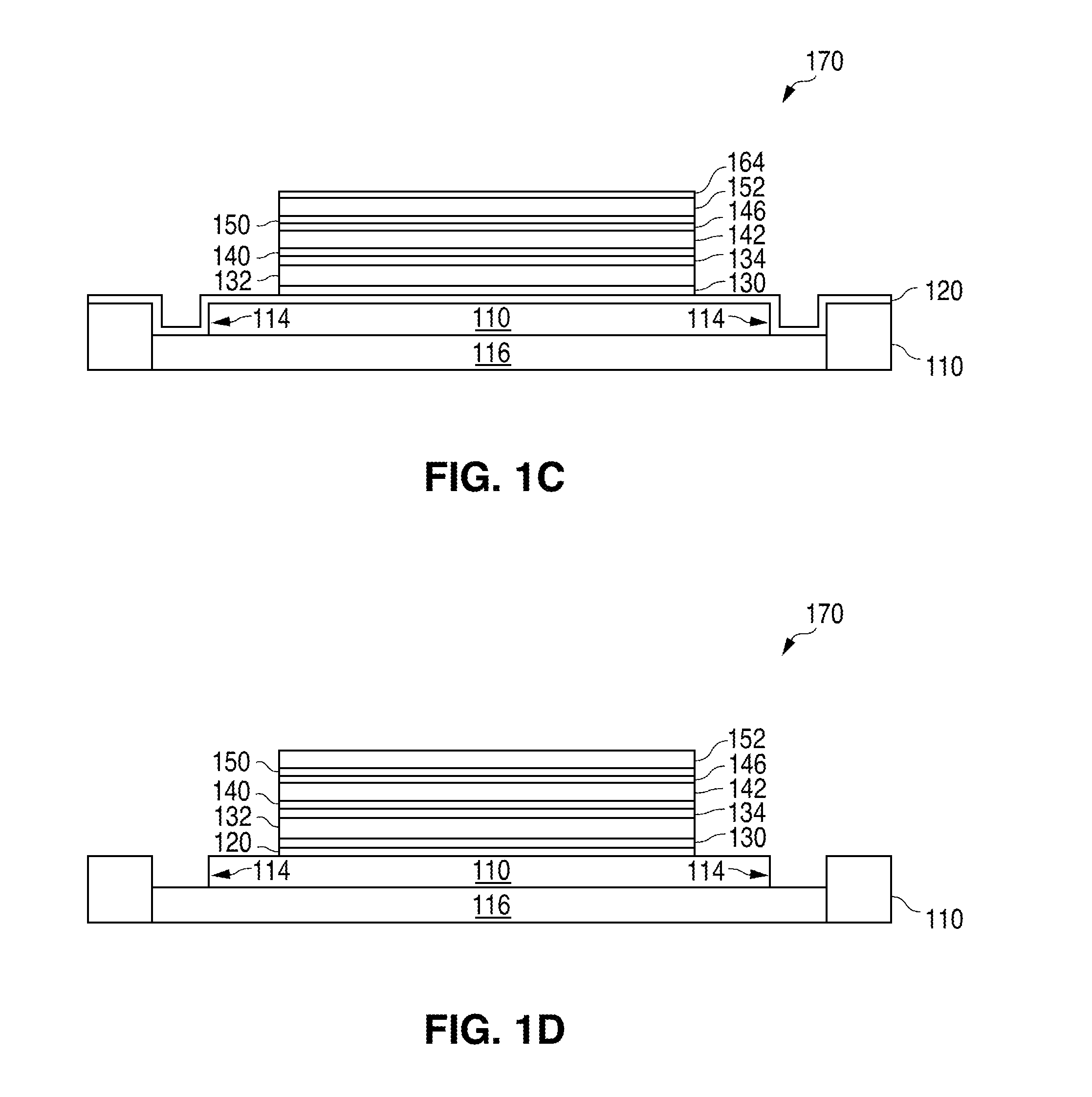Method of Forming a Laminated Magnetic Core with Sputter Deposited and Electroplated Layers
a technology of laminated magnetic core and electroplating layer, which is applied in the direction of magnetic cores, transformers/inductances, magnetic bodies, etc., can solve the problems of increasing the stress of the stack, and sputter-deposited laminated magnetic cores
- Summary
- Abstract
- Description
- Claims
- Application Information
AI Technical Summary
Benefits of technology
Problems solved by technology
Method used
Image
Examples
Embodiment Construction
[0021]FIGS. 1A-1D show views that illustrate an example of a method of forming a laminated magnetic core in accordance with the present invention. Although the laminated magnetic core of the present invention is utilized in conjunction with a coil, the specifics of the coil are omitted for simplicity.
[0022]As shown in FIG. 1A, the method of the present invention utilizes a non-conductive structure 110 that has a substantially-planar top surface 112. Non-conductive structure 110 can be implemented with any material which has good dielectric properties. For example, a layer of photoimageable epoxy or polymer, such as SU-8, which has a relatively low stress and a low coefficient of thermal expansion, can be used. Materials such as SU-8 are substantially self planarizing.
[0023]In some embodiments, as illustrated in the present example, non-conductive structure 110 has openings 114 that expose underlying conductive structures 116, such as coil segments. (Only one conductive structure 116...
PUM
| Property | Measurement | Unit |
|---|---|---|
| deposition rate | aaaaa | aaaaa |
| thick | aaaaa | aaaaa |
| frequency | aaaaa | aaaaa |
Abstract
Description
Claims
Application Information
 Login to View More
Login to View More - R&D
- Intellectual Property
- Life Sciences
- Materials
- Tech Scout
- Unparalleled Data Quality
- Higher Quality Content
- 60% Fewer Hallucinations
Browse by: Latest US Patents, China's latest patents, Technical Efficacy Thesaurus, Application Domain, Technology Topic, Popular Technical Reports.
© 2025 PatSnap. All rights reserved.Legal|Privacy policy|Modern Slavery Act Transparency Statement|Sitemap|About US| Contact US: help@patsnap.com



